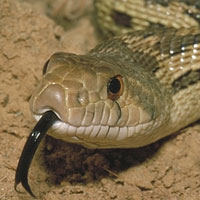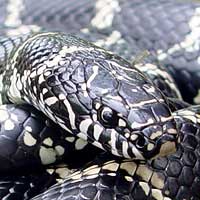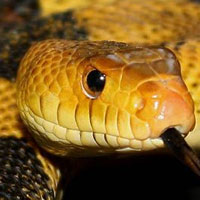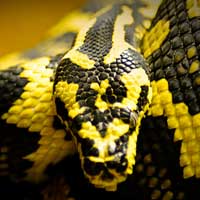Everything You Need to Know About the Rubber Boa
The Rubber Boa is scientifically named Charina bottae. It belongs to the Boidae family, which includes non-venomous constrictor snakes.
Scientific Name: Charina bottae
Snake Family: Boidae
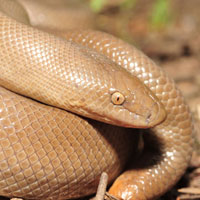
Rubber Boa: An Overview
The Rubber Boa (Charina bottae) is a small, non-venomous snake native to North America. Known for its smooth, rubbery skin and docile temperament, this species is a favorite among beginner and experienced snake keepers alike. Its adaptability and ease of care make it a fascinating addition to any reptile collection. This guide will explore its natural habitat, diet, behavior, and more.
Where Does the Rubber Boa Live? Exploring Its Habitat
The Rubber Boa is primarily found in the western regions of North America, inhabiting diverse environments ranging from forests to grasslands. Its ability to thrive in various climates makes it a highly adaptable species.
| Habitat Feature | Description |
|---|---|
| Geographic Range | Western United States, Canada, and parts of Mexico |
| Preferred Environment | Forests, grasslands, and rocky terrains |
| Climate | Cool and temperate, with mild temperatures |
What Does the Rubber Boa Eat? Understanding Its Diet
The Rubber Boa is a carnivore, feeding primarily on small mammals, lizards, and occasionally bird eggs. Providing a diet that mirrors its natural feeding habits is essential for its health.
- Juveniles: Feed on small pinky mice or baby lizards every 5-7 days.
- Adults: Feed on appropriately sized rodents every 10-14 days.
- Prey Size: Ensure prey is no larger than the snake’s girth to avoid digestive issues.
- Hydration: Provide fresh water in a shallow dish for drinking and occasional soaking.
Behavior and Temperament of the Rubber Boa
The Rubber Boa is renowned for its calm and gentle nature, making it one of the most docile snake species available. Its behavior and temperament make it an excellent choice for first-time snake keepers.
- Docile Nature: Rarely aggressive and highly tolerant of handling.
- Burrowing Instincts: Enjoys hiding under substrate or within crevices.
- Activity Level: Primarily nocturnal, but may exhibit activity during cooler parts of the day.
Ensuring the Health and Longevity of the Rubber Boa
With proper care, the Rubber Boa can live 15-20 years in captivity. Monitoring its health and maintaining a suitable environment are key to its longevity.
| Health Issue | Symptoms | Prevention |
|---|---|---|
| Respiratory Infections | Wheezing, open-mouth breathing | Maintain proper humidity and temperature |
| Skin Shedding Issues | Incomplete or stuck sheds | Provide adequate humidity and hydration |
| Parasites | Visible mites, itching | Regularly clean and disinfect the enclosure |
Reproductive Behavior of the Rubber Boa
The Rubber Boa is ovoviviparous, giving birth to live young. Breeding this species in captivity is relatively straightforward with the right conditions.
- Mating Season: Late spring to early summer.
- Gestation Period: Approximately 4-5 months.
- Litter Size: Typically 2-8 young.
- Ensure temperature fluctuations to mimic natural seasonal changes and stimulate breeding.
How to Handle and Care for Your Rubber Boa
The Rubber Boa is easy to care for, making it an ideal species for beginners. Proper handling and a well-maintained enclosure ensure a stress-free and healthy snake.
- Provide an enclosure with a temperature gradient of 70-85°F.
- Use a substrate like aspen shavings or coconut fiber for burrowing.
- Include hiding spots and climbing features for enrichment.
- Handle gently, supporting its body fully to avoid stress.
- Clean the enclosure regularly and provide fresh water daily.
Other Snakes In This Species
 Argentine Boa
Argentine Boa Calabar Burrowing Boa
Calabar Burrowing Boa Colombian Rainbow Boa
Colombian Rainbow Boa Common Boa
Common Boa Cooks Tree Boa
Cooks Tree Boa Cuban Boa
Cuban Boa Desert Rosy Boa
Desert Rosy Boa Desert Sand Boa
Desert Sand Boa Dumeril Boa
Dumeril Boa Egyptian Sand Boa
Egyptian Sand Boa Emerald Tree Boa
Emerald Tree Boa Haitian Boa
Haitian Boa Hog Island Boa
Hog Island Boa Madagascar Ground Boa
Madagascar Ground Boa Madagascar Tree Boa
Madagascar Tree Boa Pacific Boa
Pacific Boa Red Sand Boa
Red Sand Boa Rough-scaled Sand Boa
Rough-scaled Sand Boa Rubber Boa
Rubber Boa True Red Tail Boa
True Red Tail Boa Western Rainbow Boa
Western Rainbow Boa



